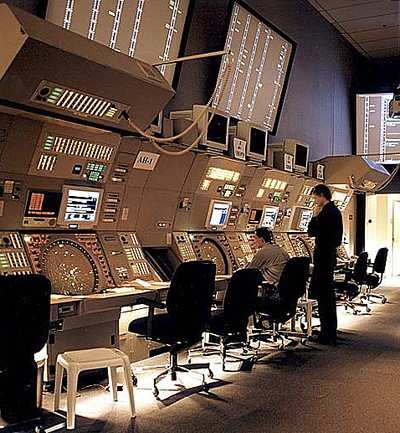Will Hire Almost 1,400 Controllers In 2007
 In something of an about-face
to repeated claims the Federal Aviation Administration (FAA) had
adequate numbers of new hires waiting in the wings to replace
retiring air traffic controllers, Wednesday morning the FAA
released its "updated" plan to hire more controllers over the next
10 years, which includes hiring almost 1,400 controllers this year
alone.
In something of an about-face
to repeated claims the Federal Aviation Administration (FAA) had
adequate numbers of new hires waiting in the wings to replace
retiring air traffic controllers, Wednesday morning the FAA
released its "updated" plan to hire more controllers over the next
10 years, which includes hiring almost 1,400 controllers this year
alone.
The FAA states the plan "provides a range of authorized
controller staffing numbers for each of the FAA’s 314 staffed
facilities across the country, giving the agency greater
flexibility to match the number of controllers with traffic volume
and workload."
In a release to ANN, the agency stated it will hire and train
more than 15,000 controllers over the next decade, as more
controllers become eligible for retirement. The updated plan calls
for hiring 189 more controllers this year, than 2006 hiring
levels.
In developing the individual staffing ranges, the FAA states it
considered past performance, the performance of similar ATC
facilities, improvements to productivity, industrial engineering
staffing standards, and recommendations from the National Academy
of Sciences -- as well as input from field managers, overtime
trends, time-on position data and expected retirements.
The agency also states the updated staffing requirements also
take into account the unique facility requirements, such as
temporary airport construction, seasonal activity and the number of
controllers currently in training.
"Air traffic levels are very dynamic," said FAA Administrator
Marion Blakey. "It is critical that we staff facilities based on
actual and forecasted traffic demands. We are confident that the
new controller hires will be able to meet the needs of the
future."

In fiscal year 2006, the FAA hired 1,116 new controllers,
increasing the total number of controllers to 14,618 -- numbers the
agency says will only increase in coming years. To combat that
increased training workload, the FAA says it has increased capacity
at the FAA Academy in Oklahoma City, and at air traffic facility
simulators to lower the average training time from three years to
two years at terminal facilities... and from five years to three
years for en route facilities.
The FAA also claims it has made significant progress in
effectively staffing facilities by using improved scheduling
practices, new automated tools, and better management of leave.
NATCA Responds
The National Air Traffic Controllers Association responded to
the FAA's change in plans by stating the agency is "simply staffing
to budget and not to what is needed to safely run the National
Airspace System."

"According to the FAA’s most recent "Administrator’s
Fact Book," published in December 2006, there are 14,206 air
traffic controllers working in the United States," NATCA tells ANN.
"That represents a drop in controller staffing levels for the third
straight year and provides a strong indication that despite the
FAA’s attempts to hire the next generation workforce to
offset the long-expected retirement wave that has now arrived, the
agency is losing more controllers than it is hiring."
Perhaps not entirely by surprise, NATCA states this deficiency
is primarily due to lower pay bands and harsher work rules imposed on controllers last
year. NATCA claims those factors "have removed any
incentive for veteran controllers to either transfer to busier
facilities in need of more controllers or even to stay in the
workforce altogether."
The union also cites examples of new hires who chose to leave
the FAA for greener pastures (literally -- one left to start a lawn
mowing business, according to NATCA.)
"Even FAA management officials at the facility level are
acknowledging that veteran controllers are leaving sooner than ever
upon reaching retirement eligibility, thereby depleting available
ranks of fully certified controllers and also removing the
on-the-job trainers to assist with the development of new hires,"
NATCA tells ANN.
 SpaceX to Launch Inversion RAY Reentry Vehicle in Fall
SpaceX to Launch Inversion RAY Reentry Vehicle in Fall Aero-News: Quote of the Day (04.23.24)
Aero-News: Quote of the Day (04.23.24) Aero-News: Quote of the Day (04.20.24)
Aero-News: Quote of the Day (04.20.24) ANN's Daily Aero-Linx (04.20.24)
ANN's Daily Aero-Linx (04.20.24) Aero-News: Quote of the Day (04.21.24)
Aero-News: Quote of the Day (04.21.24)





